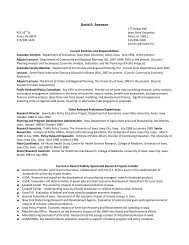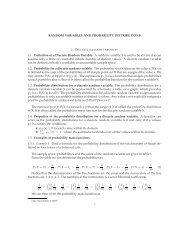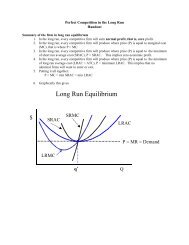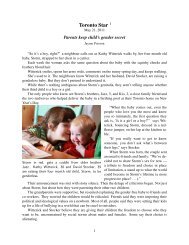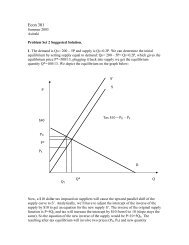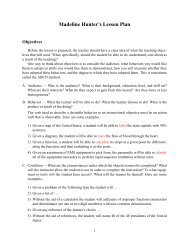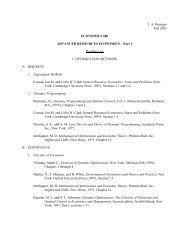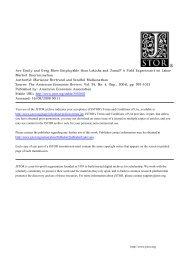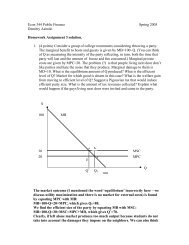SAMPLE MOMENTS 1.1. Moments about the origin (raw moments ...
SAMPLE MOMENTS 1.1. Moments about the origin (raw moments ...
SAMPLE MOMENTS 1.1. Moments about the origin (raw moments ...
You also want an ePaper? Increase the reach of your titles
YUMPU automatically turns print PDFs into web optimized ePapers that Google loves.
10 <strong>SAMPLE</strong> <strong>MOMENTS</strong>Now consider <strong>the</strong> third term on <strong>the</strong> right side of 42 (ignoring n 2 for now) which we can write as⎡E [ Ȳ 4 ] = 1 n∑n E ⎣4= 1 n 2 E ⎡⎣i =1n∑i =1Y in ∑j =1Y jn ∑k =1Y kn ∑l =1Y l⎤⎦Yi 4 + ∑∑ Y i 2 Yk 2 + ∑∑ Y i 2 Yj2 + ∑i ̸=k i ̸= ji ̸= jYi 2 Yj 2 + ···⎤⎦(45a)(45b)where for <strong>the</strong> first double sum (i = j ≠ k=l), for <strong>the</strong> second (i = k ≠ j=l), and for <strong>the</strong> last (i = l ≠ j=k) and ... indicates that all o<strong>the</strong>r terms include Y i in a non-squared form, <strong>the</strong> expected value of which willbe zero. Given that <strong>the</strong> Y i are independently and identically distributed, <strong>the</strong> expected value of each of <strong>the</strong>double sums is <strong>the</strong> same, which gives⎡E [ Ȳ 4] = 1 n∑n 4 E ⎣= 1 n 4 [ n∑i =1= 1 n 4 [ n∑i =1Yi 4 + ∑∑ Y i 2 Yk 2 + ∑∑ Y i 2 Yj2 + ∑i ̸= k i ̸= ji ̸= jEYi 4 +3 ∑∑ ]Y i 2 Yj 2 + terms containing EX ii ̸= ji =1EYi 4 +3 ∑∑ Y i 2 Yj2i ̸= j]Y 2i Y 2⎤j + ··· ⎦(46a)(46b)(46c)= 1 n 4 [nµ4 +3n (n − 1) ( µ 2 ) 2] (46d)= 1 n 4 [nµ4 +3n (n − 1) σ 4] (46e)= 1 n 3 [µ4 +3(n − 1) σ 4] (46f)Now combining <strong>the</strong> information in equations 44, 45, and 46 we obtain



